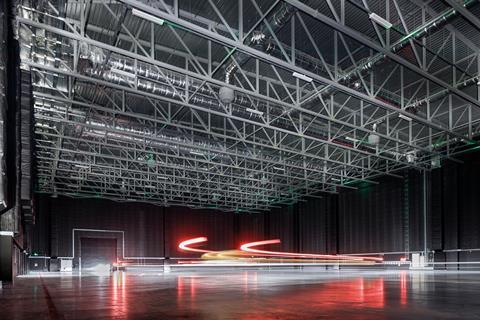- News

All the latest updates on building safety reformRegulations latest
- Focus
- Home
- News
- Focus
- Comment
- Events
- CPD
- Building the Future
- Jobs
- Data
- Subscribe
- Building Boardroom
Cost model: Film and TV studios
By Paul Davis, Laura Jevons, Ben Hooker and Tim Jackson 2020-06-26T05:00:00

Source: Andy Marshall Architectural Photography / PRP Architects
Even before the pandemic, home streaming of films and TV shows was growing rapidly, feeding demand for new facilities that can create compelling material for these platforms. Aecom’s Paul Davis, Laura Jevons, Ben Hooker and Tim Jackson examine the key cost drivers of building a new studio or sound stage

Source: Andy Marshall Architectural Photography / PRP Architects
Space Studios, Manchester
01 / Overview
Home to many of the world’s leading film studios and sound stages, the UK is becoming a key location for global media players seeking to increase their output and make the most of the rise in online streaming.
In September 2019 Disney took a long-term lease on stages and production accommodation at Pinewood Studios in Buckinghamshire. A few months earlier Netflix entered a long-term deal with Shepperton Studios in Surrey to create a dedicated production hub there. Such long‑term leases, while great for the UK TV and film industry, have led to a shortage of studio space.
Developers and larger media networks are responding by creating new facilities – with Sky’s £3bn investment at Elstree being complemented by council-led studio developments in Kent and Essex that hope to stimulate regeneration in their respective regions.
In general, clients – whether media networks or developers – will seek out one of four main types of studio or sound stage facility:
- New-build or purpose-built These tend to be used for large-scale, high‑end film and TV work, and are typically established on a large site, with extensive external works for the accommodation gallery vans, trailers and other production facilities. There are currently only a handful of these in the UK at present – notably Pinewood, Shepperton and the Warner Bros studio in Leavesden – and so it is unsurprising that these locations have seen an increase in demand over recent years.
- Refurbished or formally repurposed These are buildings that have been refurbished to create studio space. Depending on their previous uses, they may require additional soundproofing to enable a suitable sound and light lock.
- Flat-floor TV Super-flat floor or shiny floor studios are generally used for TV studios. They contain laser-levelled resin floors to enable smooth multi‑camera tracking, giving them a shiny, black-glass finish.
- Industrial or blank canvas These are similar to repurposed spaces but without the formal soundproofing requirements. They tend to be former industrial units that are stripped out for use as production spaces. With very little construction work required, they can be leased as blank canvases for production teams to fit out themselves, although creating enough space for production support can be a challenge.
Read more…
This is PREMIUM content
available to Building Boardroom and Building subscribers only
You are not currently logged in. Building Boardroom Members and Subscribers may LOGIN here.
Become a Building Boardroom Member

to read this report now, plus have unlimited access to:
- Exclusive research and client insight to support your strategic planning
- Benchmark reports, and proven tools to aid your business development
- Attend bespoke community events…plus much more
Alternatively…
Become a Building subscriber
to gain access to building.co.uk for the latest news, expert analysis & comment from industry leaders, plus data and research.
Already a Boardroom member? Log in here.


















